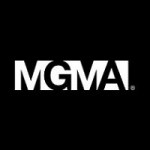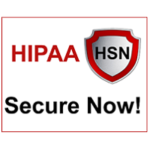Taking a break from who is hiring and who was hired, we rounded up some reading on the state of the healthcare workforce. Like many things in our lives for the past two years the pandemic has taken a toll on it. The healthcare workforce might be on the top of the list of disruption. With 18% of healthcare workers having left their jobs and another 12% being laid off, what are the solutions for healthcare as a whole? You can’t open a paper, magazine, or watch news and not hear about the crisis that has evolved. Here are some insights and reports.
To Listen
From Healthcare IT Today, hosts John Lynn and Colin Hung discuss: Healthcare Workforce Predictions and Solutions.
In The News
McKesson Foundation Awards $4.1 Million to Pharmacy Schools to Help Close Diversity Gap and Improve Health Outcomes
The McKesson Foundation (@McKesson) is on a mission to help increase diversity of the pharmacy workforce and improve overall health outcomes for vulnerable populations by donating more than $4.1 million to pharmacy schools at Hampton University, University of Michigan, University of Minnesota College of Pharmacy, University of North Carolina at Chapel Hill, and University of New Mexico. The grants, which range from one to five years, will support various pharmacy school education and community outreach programs.
Smartlinx Advanced Timeclock for Employees (SLATE) Boasts Richer Features to Curb Germ Spread in Healthcare Facilities and Streamline Caregiver Workforce Management
Smartlinx (@SmartLinx), the platform simplifying healthcare workforce management with transformational visibility, predictability and control, announced that it has expanded its offerings in touchless time tracking and employee scheduling to better meet the current staffing and infection disease climate in skilled nursing facilities and hospitals. The Advanced Timeclock for Employees (SLATE) curbs the spread of germs with thermal-sensing temperature monitoring and touchless functionality, preventing workers with fevers from starting a shift and halting harmful microorganisms from entering a facility.
HHS amends PREP Act Declaration Increasing Workforce Authorized to Administer Monkeypox Vaccines
The U.S. Department of Health and Human Services (HHS) (@HHSGov) Secretary Xavier Becerra amended the Public Readiness and Emergency Preparedness Act (PREP Act) declaration for smallpox medical countermeasures to expand the categories of providers authorized to administer vaccines and therapeutics against smallpox, monkeypox virus, and other orthopoxviruses in a declared emergency.
Global Workforce Intelligence Project Identifies New Healthcare Operating Model to Address Impending Nursing Gap of 2.1 Million Care Providers
The Josh Bersin Company (@Josh_Bersin), a research and advisory firm focused on HR and workforce strategies, has published groundbreaking research, revealing the real extent to which U.S. healthcare organizations must radically adapt to reverse the effects of mass resignations, impending retirements, a shortage of new nurses entering the field, and an aging population in need of more care.
With New American Rescue Plan Funding, HRSA Expands and Strengthens the Community and Public Health Workforce
The U.S. Department of Health and Human Services (HHS) (@HHSGov), through the Health Resources and Services Administration (HRSA) (@HRSAgov), awarded more than $266 million in American Rescue Plan funding to grow the community and public health workforce.
To Read
Centralized Staffing: How and Why It Could Work at Your Health System – By Karlene Kerfoot, PhD, RN, FAAN, symplr (@symplr) – Competing, high priorities in healthcare workforce management—costs, staff satisfaction, and patient experience—are tipping the needle toward use of centralized staffing for many health systems. In centralized healthcare staffing, a central office manages scheduling and staffing rather than individual units. In the early days of centralized staffing, about a decade ago, hospitals simply set up an office with a direct line to organize call-ins for nurses and other healthcare professionals to help units fill staffing requests. Over the years, the model has gained in popularity among health system employers that need coverage for multiple healthcare facilities.
A “Great Resignation” Reality Check – By David Burda, 4sight Health (@4sighthealth_) – In journalism, you’re told that if your mother tells you she loves you, check it out. In other words, you can’t believe anything anyone says — even your mom — without verifying it with a credible source. In my nearly 40 years in journalism, I’d like to think that I’ve been pretty accurate in my reporting. I can count on one hand the number of mistakes I made that required a correction. They still haunt me. Over the past couple of years, I’ve been reading a lot and hearing a lot about the “great resignation” in healthcare — people quitting their jobs at levels not seen before. I’ve taken it at face value. Why would healthcare consultants, vendors, suppliers, trade associations and professional membership societies lie about such things? (Sarcasm intended.)
Employee attrition—Exploring the post-pandemic landscape – From the HGS Blog (@teamhgs) – The past couple of years has introduced a new set of challenges, leaving long-lasting repercussions on the BPM industry. While in 2020, companies experienced low attrition and added load from clients, mass layoffs and uncertainty were still looming over the workforce and are even more ubiquitous today. The industry has seen a labor shortage, with a large number of people either leaving the workforce or looking for better opportunities in pursuit of passion, work-life balance, and more rewarding ventures.
Resources
 Staffing Resource Center
Staffing Resource Center
MGMA
Twitter: @MGMA
With physician burnout on the rise and engagement on the decline, it can feel like there’s nothing you can do to combat the staffing shortage impacting the healthcare industry. Check out their list of best resources to help you restore your staffing levels and make it through the twilight of this pandemic. You can do this, and we’re here to help.
 2022 Healthcare Workforce Rescue Package
2022 Healthcare Workforce Rescue Package
All In WellBeing First for Healthcare
Twitter: @AllIn4WellBeing
Two years into a global pandemic, healthcare team members are in crisis. Leaders are bombarded with competing messages about how to support them and address workforce shortages. A group of experts in collaboration with the National Academy of Medicine identified the top five actions leaders should take to support team members now. These evidence-based actions can be initiated within 3 months and build a foundation for a long-term system well-being strategy.
 Remote Workforce and HIPAA
Remote Workforce and HIPAA
Twitter: @HIPAASecureNow
Whether a change in your business structure came about from the pandemic, or it just makes more sense for your team, remote work is the norm for many more professionals today than it was in years past.
If you’re in healthcare, this means that you need to factor in the HIPAA component as well as cybersecurity to protect you, the business, and your patients.

